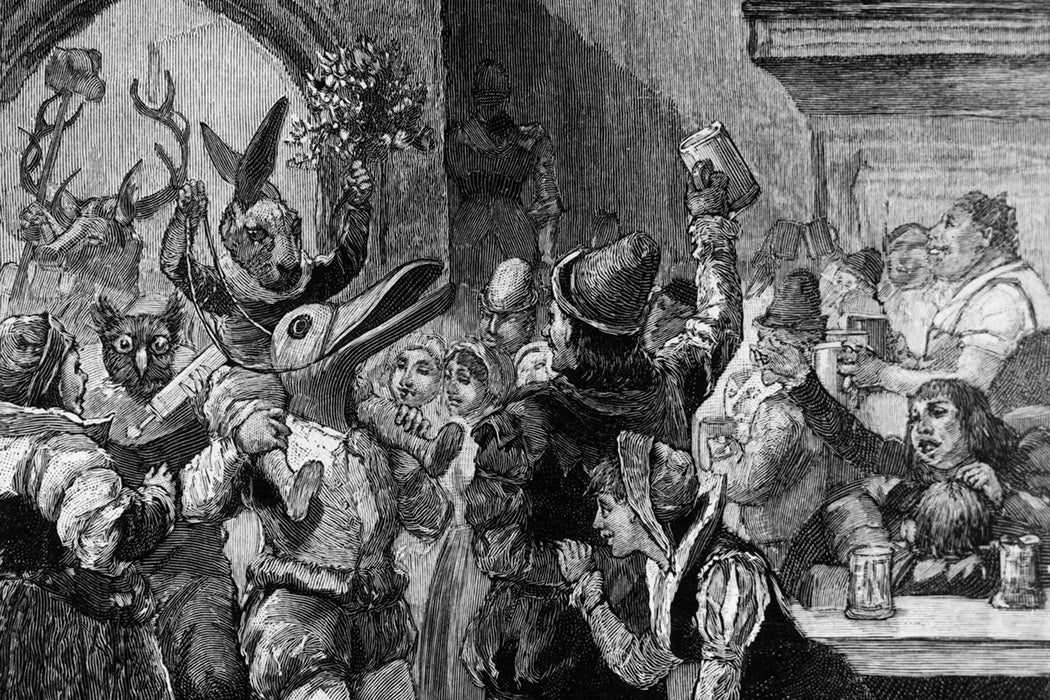In central and eastern Europe after the Reformation, Christmas Eve was popularly thought of as a time of heightened supernaturalism. The dead walked the earth as ghosts, witches, and werewolves. It was best to eat a lot of garlic, avoid sacred activities, and abstain from sexual relations, since any child conceived that night was sure to be cursed and grow up to be a tool of the devil. Churches wouldn’t help, since maleficent forces made them special targets during Christmas.
Thus, according to Judaic studies scholar Rebecca Scharbach, Christmas Eve meant staying up all night with family and friends—singing, dancing, playing games—all to avoid a visitation from the dead. The rowdiness and lights would repel evil. “Faced with troops of the returning dead,” she writes, “the savvy practitioner discourages uncanny visitors by creating spaces that belong unambiguously to the living—spaces filled to bursting with waking bodies, light, noise and celebration.”
This was a Christian tradition. But it was also a Jewish one, called Nittel Nacht (Nativity Night). Jews refrained from reading the Torah, abstained from sex, and ate lots of garlic as they played cards all night long. The parallels are so striking because Nittel Nacht is actually a “Jewish adaptation of the [Christian] tradition.”
The difference was that instead of an army of the dead walking the earth, as Christians believed, there was only one: Jesus, born Jewish but now a sort of sorcerer. Christ walking on Christmas Eve was potent dark magic: On Nittel Nacht, “religious sparks are diverted to feed the power of evil; children conceived under his influence are spiritually corrupted; and the community of his birth cowers indoors.”
Scharbach calls this Jewish variation on Christmas Eve “a mystical calculus that speaks volumes about European Jewish anxiety regarding the Christian majority,” who could unleash murderous pogroms at a moment’s notice. Staying inside on Christmas Eve amid rowdy anti-Semites who believed Jews were responsible for killing Christ would seem a reasonable response to terror.
Weekly Newsletter
Nittel Nacht, argues Scharbach, was “not such a radical departure” from the Christian tradition at all, but this isn’t to suggest that it “is somehow less Jewish[.]” It spread quickly, suggesting that this “customary system fulfilled some widespread and urgent need within the early modern Jewish communities of central and eastern Europe.”
This history is “a tale of two unequal communities buffeted between social conditions that drew them together and distinctive communal needs that pushed them apart.” It also suggests why Nittel Nacht has been observed less often in the aftermath of the creation of the state of Israel: The violently anti-Semitic conditions that created the tradition don’t exist there. And over the last century, rabbinical authorities have spoken in favor of abandoning or limiting Nittel Nacht. As Scharbach writes, “Modern practitioners have found the Nittel Nacht observances increasingly irksome and meaningless, though many continue to observe them for the sake of tradition.”
Support JSTOR Daily! Join our new membership program on Patreon today.







